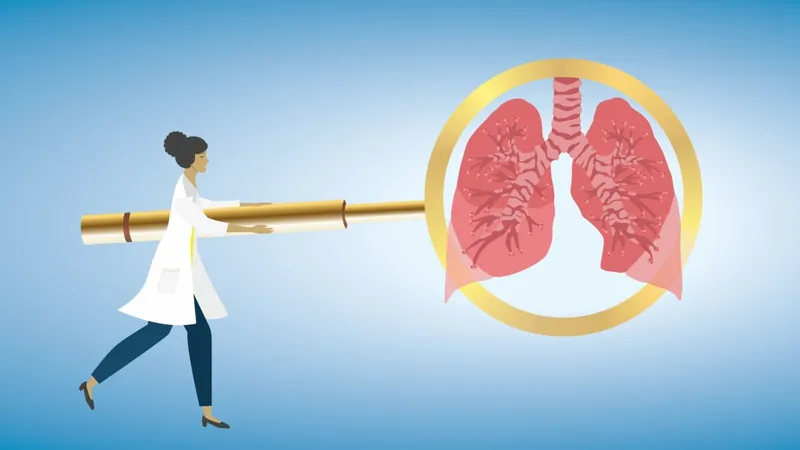
Shocking Revelation: 15% of U.S. Cancer Patients Still Smoke at Diagnosis!
2025-04-07
Author: Wei
In a groundbreaking study led by researchers at the Yale Cancer Center, it has been revealed that a staggering 15% of cancer patients diagnosed in 2023 were active smokers at the time of their diagnosis. This alarming statistic is part of a larger trend where nearly half of the cancer patients also reported a history of smoking.
Published in JAMA Oncology, the study utilized data from the National Cancer Database (NCDB), the largest cancer database in the United States, which began tracking patients’ smoking status this year. This newly incorporated data is pivotal for medical professionals as it offers invaluable insights that could significantly influence the effectiveness and safety of cancer treatments.
According to Dr. Daniel Boffa, the senior investigator of the study at Yale Cancer Center, “This is the broadest look at smoking within the U.S. cancer population available.” The implications of this research are substantial, particularly as tobacco smoking is known to be a major contributor to various cancers, including lung, mouth, throat, esophageal, and liver cancers.
In the U.S., smoking is linked to about 20% of all cancer diagnoses, and currently, around 12% of the population smokes regularly. The study aims to highlight the stark contrast between cancer patients and the general public regarding smoking habits. Researchers found that 47% of the patients entered into the NCDB in 2023 were either current or former smokers, revealing a fourfold increase in tobacco use among cancer patients relative to the normal population.
In this study, 15% of currently diagnosed cancer patients were still smoking. Dr. Boffa emphasized the significance of this finding: “This is a huge opportunity because getting people to quit smoking after being diagnosed with cancer is a really powerful way to increase survival.” Quitting smoking not only alleviates the side effects and complications associated with cancer treatments but can also enhance the effectiveness of these therapies. Remarkably, the positive impact of quitting can often surpass that of many new treatment options.
Interestingly, the research showed that the prevalence of active and former smokers varies significantly across different regions of the U.S. Four states—Kentucky, Tennessee, Alabama, and Mississippi—stand out for having the highest rates of active smokers among cancer patients.
The research underscores the urgent need to integrate smoking cessation resources into cancer care programs. By prioritizing these resources in regions where smoking rates are highest, healthcare providers could dramatically improve treatment outcomes for countless patients.
Dr. Boffa concluded, “If we can bring smoking cessation resources to states where certain groups are more likely to be actively smoking, we could really move the needle and improve cancer care outcomes.” This study illuminates the intricate link between smoking and cancer, bringing hope that targeted interventions could lead to better survival rates for those battling the disease.



 Brasil (PT)
Brasil (PT)
 Canada (EN)
Canada (EN)
 Chile (ES)
Chile (ES)
 Česko (CS)
Česko (CS)
 대한민국 (KO)
대한민국 (KO)
 España (ES)
España (ES)
 France (FR)
France (FR)
 Hong Kong (EN)
Hong Kong (EN)
 Italia (IT)
Italia (IT)
 日本 (JA)
日本 (JA)
 Magyarország (HU)
Magyarország (HU)
 Norge (NO)
Norge (NO)
 Polska (PL)
Polska (PL)
 Schweiz (DE)
Schweiz (DE)
 Singapore (EN)
Singapore (EN)
 Sverige (SV)
Sverige (SV)
 Suomi (FI)
Suomi (FI)
 Türkiye (TR)
Türkiye (TR)
 الإمارات العربية المتحدة (AR)
الإمارات العربية المتحدة (AR)